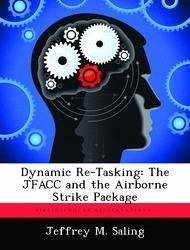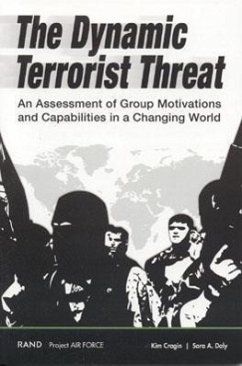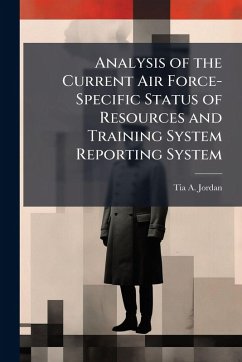
Dynamic Re-Tasking
The JFACC and the Airborne Strike Package
Versandkostenfrei!
Versandfertig in über 4 Wochen
15,99 €
inkl. MwSt.

PAYBACK Punkte
8 °P sammeln!
The explosion of information technology has enabled real-time intelligence to become an invaluable tool to the Joint Force Air Component Commander (JFACC). This capability has led to an increased drive to allow the JFACC tighter control over airborne assets, adding flexibility to the JFACC's response options, but, in effect, "centralizing" execution. What is the implication of this centralization on the decision making process involving airborne missions? What is the appropriate level of control for the processing of real time intelligence in future air operations? Does the responsibility lie ...
The explosion of information technology has enabled real-time intelligence to become an invaluable tool to the Joint Force Air Component Commander (JFACC). This capability has led to an increased drive to allow the JFACC tighter control over airborne assets, adding flexibility to the JFACC's response options, but, in effect, "centralizing" execution. What is the implication of this centralization on the decision making process involving airborne missions? What is the appropriate level of control for the processing of real time intelligence in future air operations? Does the responsibility lie within the Joint Air Operations Center (JAOC)? The primary purpose of this paper is not to answer these questions, rather it is to pose them and other issues as items to consider for operations and identify areas for future research. In doing so it examines the JAOC structure, the relationship of information to the Master Air Attack Plan and methods of distributing that information to the warfighter through the Air Tasking Order and alternately through Dynamic Re-tasking. It briefly discusses the cognitive decision making process, examines real time intelligence integration, and the possible results of exploitation of that process. Finally, the paper concludes with a discussion of Dynamic Re-tasking and a discourse on Centralized vs. Decentralized Execution. This work has been selected by scholars as being culturally important, and is part of the knowledge base of civilization as we know it. This work was reproduced from the original artifact, and remains as true to the original work as possible. Therefore, you will see the original copyright references, library stamps (as most of these works have been housed in our most important libraries around the world), and other notations in the work. This work is in the public domain in the United States of America, and possibly other nations. Within the United States, you may freely copy and distribute this work, as no entity (individual or corporate) has a copyright on the body of the work. As a reproduction of a historical artifact, this work may contain missing or blurred pages, poor pictures, errant marks, etc. Scholars believe, and we concur, that this work is important enough to be preserved, reproduced, and made generally available to the public. We appreciate your support of the preservation process, and thank you for being an important part of keeping this knowledge alive and relevant.












